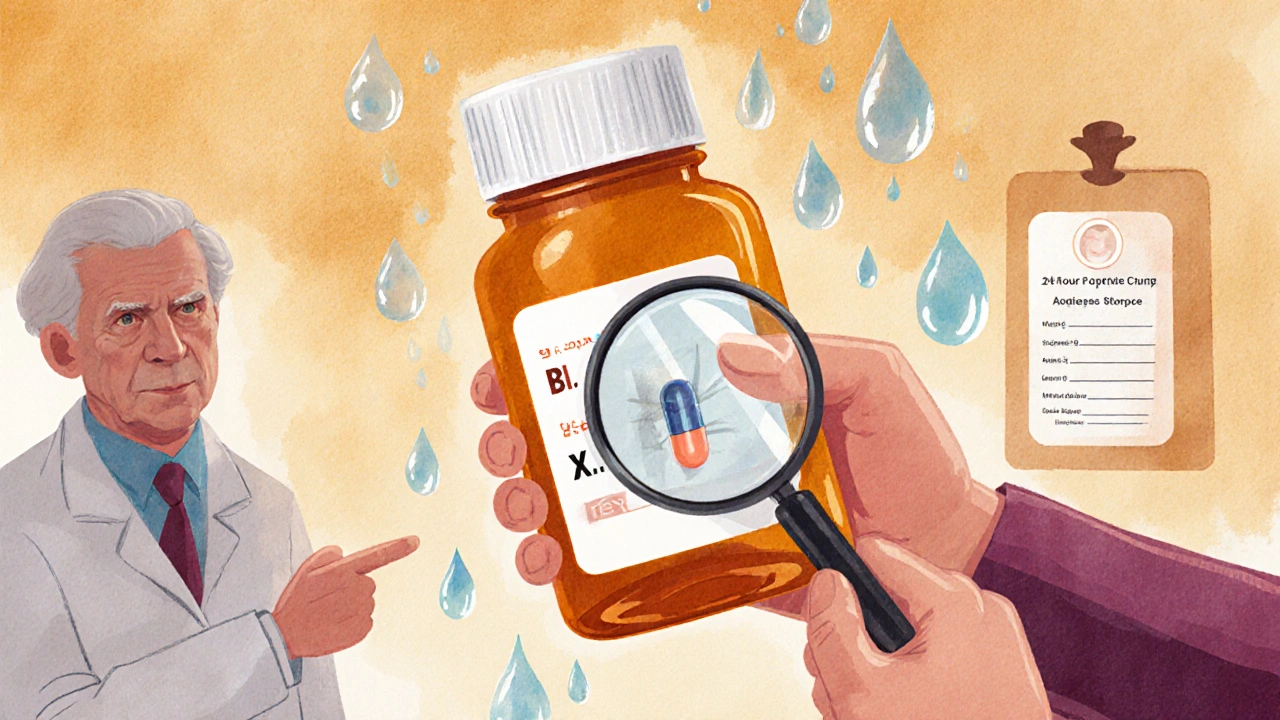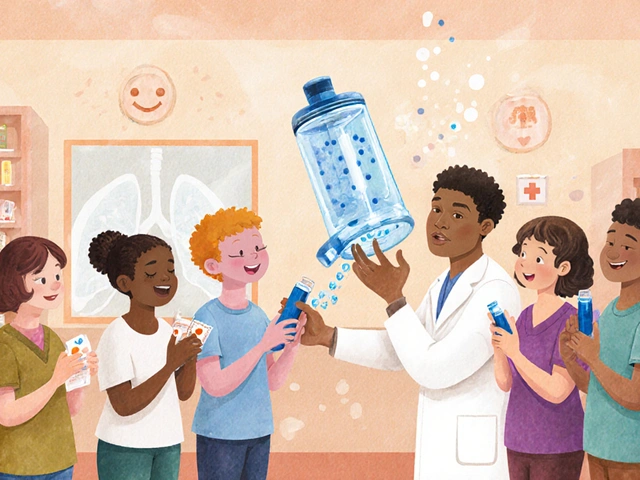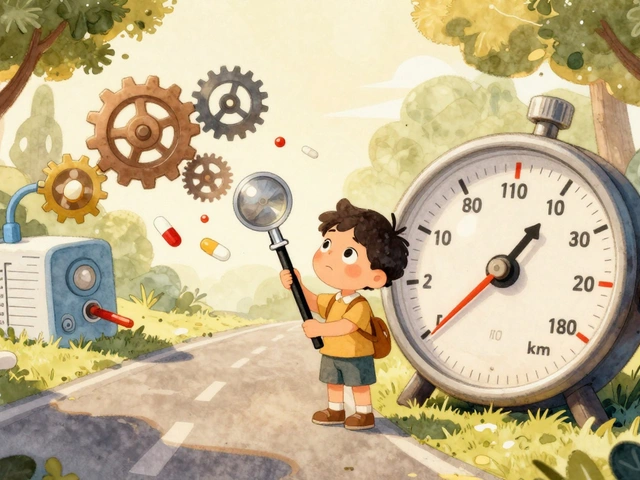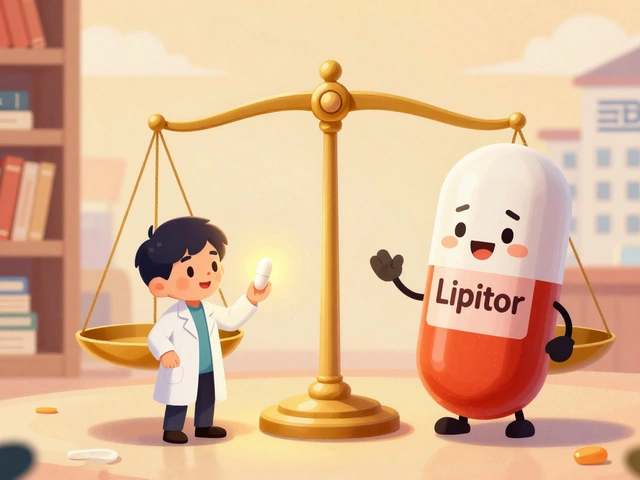
Every year, thousands of people accidentally take extended-release medications the wrong way - crushing them, splitting them, or taking them at the wrong time - and end up in the hospital. It’s not because they’re careless. It’s because the labels are confusing. If you’ve ever stared at a pill bottle and wondered what "XR," "ER," or "24-hour extended release" actually means, you’re not alone. These aren’t just fancy labels. They’re safety instructions written in code. Get it wrong, and you could get seriously hurt.
What Extended-Release Means (And Why It Matters)
Extended-release medications are designed to release their active ingredient slowly over hours, not all at once. Think of it like a slow drip of water instead of turning on a full faucet. This keeps your blood levels steady, so you don’t feel the highs and lows that come with immediate-release pills. Most people take these once or twice a day instead of three or four times. That’s convenient - but only if you understand how they work.These pills don’t just last longer. They’re built differently. Some are coated with a thin polymer layer that dissolves slowly. Others are mixed into a gel-like matrix that breaks down over time. A few use osmotic systems - like Concerta - that push the drug out through tiny holes in the pill. If you crush or chew any of these, you’re basically breaking open a time-release capsule and dumping the whole dose into your system at once. That’s how overdoses happen.
Decoding the Letters on the Label: ER, XR, SR, CR, CD
You’ll see these abbreviations right after the drug name:- ER = Extended Release
- XR = eXtended Release
- SR = Sustained Release
- CR = Controlled Release
- CD = Continuous Delivery
They all mean the same general thing - slow release - but they’re not interchangeable. Two pills with "XR" in the name can work completely differently. For example, one person might be on Toprol XL (metoprolol succinate), and another on a generic metoprolol XR. Even though they’re both "XR," they’re not the same. One might last 24 hours. The other might last 12. The FDA doesn’t require them to be bioequivalent, so switching without checking with your pharmacist can be dangerous.
Brand names like Cardizem CD, Taztia XT, or Concerta have their own special delivery systems. You can’t assume a generic version works the same way. Always check the full name on the label. If it says "metoprolol succinate 24-hour extended release [Toprol XL]," that’s specific. If it just says "metoprolol XR," you need to ask.
What the Label Actually Tells You (Beyond the Abbreviations)
The label isn’t just about the name. There are four key sections you must read every time:- Directions - This tells you when and how often to take it. "Take once daily" doesn’t mean "whenever you remember." Some extended-release pills must be taken in the morning (like Adderall XR), others at night (like Niaspan). Taking them at the wrong time can cause side effects - insomnia, flushing, or even heart rhythm issues.
- Warnings - This is where you’ll see the big, bold "DO NOT CRUSH, SPLIT, OR CHEW" warning. If it’s not there, check again. Some labels hide it in small print. But if you see it, it’s non-negotiable. Crushing a 60mg OxyContin tablet isn’t just a bad idea - it’s life-threatening.
- Uses - This tells you what the drug is approved for. Don’t assume it works for something just because it’s "extended release." A pill made for high blood pressure won’t help with anxiety, even if it looks the same.
- Inactive Ingredients - These are the fillers and coatings. If you’re allergic to certain dyes or lactose, this section matters. Some extended-release pills use unusual polymers that can trigger reactions in sensitive people.
For over-the-counter meds like Aleve PM, the Drug Facts panel follows the same rules. "Extended release" on an OTC label means it lasts longer than regular naproxen - maybe 8-12 hours instead of 4-6. But you still can’t crush it. The same safety rules apply.

Why Timing Is Everything
Some extended-release pills aren’t just about how long they last - they’re about when they release. Take Niaspan (niacin extended-release). It’s meant to be taken at bedtime. Why? Because it causes flushing - a hot, red, itchy feeling on your skin. Taking it at night means you’re asleep when it hits. Take it in the morning, and you’re stuck at work feeling like you’ve been in a sauna for an hour.Or take Adderall XR. It’s designed to release gradually over 10-12 hours. If you take it at 8 p.m., you’re not just delaying sleep - you’re flooding your system with stimulants right before bed. One user on Drugs.com said they took it at night thinking it "would last all day" and ended up awake for 36 hours. That’s not a side effect - that’s a misread label.
There’s no universal rule. Each drug has its own rhythm. Your pharmacist can tell you the best time to take yours. Don’t guess.
The Hidden Danger: Generic Switches and Look-Alikes
Pharmacists often switch your prescription to a cheaper generic. That’s fine - unless it’s an extended-release drug. Three different companies make 24-hour diltiazem (used for high blood pressure). Each uses a different technology. One is a matrix tablet. One is a coated bead. One uses a special capsule. They all say "diltiazem ER 24-hour" on the label. But they’re not interchangeable. Switching between them can cause your blood pressure to spike or drop dangerously.Same with ADHD meds. Concerta uses an osmotic system. Ritalin LA uses coated beads. They’re both "extended release," but they release differently. One might peak at 6 hours. The other at 8. Your body responds to that. If your doctor didn’t specify the brand, ask your pharmacist: "Is this the same kind as before?"
Even small changes in shape or color can signal a different formulation. If your pill looks different, don’t assume it’s the same. Ask.
What to Do If You’re Confused
You don’t have to figure this out alone. Here’s what to do:- Ask your pharmacist - Not just "What’s this for?" Ask: "Is this extended release? How does it work? When should I take it? Can I crush it?"
- Use the teach-back method - After they explain, say: "So, just to make sure I got it - I take this once a day in the morning, and I can’t crush it, right?" If they nod, you’re good.
- Check the Medication Guide - By law, pharmacies must give you a printed guide for high-risk extended-release drugs like opioids or certain heart meds. Read it. It’s not junk mail.
- Scan the QR code - Many newer labels have a QR code. Scan it with your phone. You’ll get a video or PDF with clear instructions.
- Write it down - Keep a small card in your wallet: "My XR pill: [Drug Name], take once daily in morning, do not crush, do not split. Pharmacist: [Name], phone: [Number]."
One study found that 42% of adults over 65 misunderstood "extended release" to mean "longer-lasting effect" - but didn’t know they couldn’t crush the pill. That’s not ignorance. That’s poor labeling. But you can protect yourself.
What’s Changing in 2025
The FDA is pushing for clearer labels. Starting in 2024, all new extended-release drugs must have high-contrast "DO NOT CRUSH" warnings. By 2025, electronic prescriptions will require "24-hour extended release" instead of just "ER" to avoid confusion. Some companies are testing pills with color-changing coatings that show when the drug is fully released. In the next few years, you might see labels that say: "This pill releases over 24 hours. Do not break. Take at bedtime." Simple. Clear. No guesswork.But until then, you’re the last line of defense. Don’t assume. Don’t guess. Don’t take it for granted.
Can I split an extended-release pill in half if it’s too strong?
No. Splitting an extended-release pill can cause the entire dose to be released at once. Even if the pill looks scored, that’s usually just for manufacturing, not for patient use. Some pills, like certain extended-release tablets, are designed to be split - but only if the label or your pharmacist says so. Never assume. Always ask.
What happens if I accidentally crush an extended-release pill?
You could get a dangerous overdose. For example, crushing a 60mg OxyContin tablet releases all the morphine at once - equivalent to taking six regular pills. This can cause slowed breathing, unconsciousness, or death. If you accidentally crush or chew one, call poison control immediately or go to the ER. Don’t wait for symptoms.
Why do some extended-release pills have "24-hour" and others don’t?
The FDA requires "24-hour" or "12-hour" to be included on the label to avoid confusion. Older labels might just say "ER," but newer ones must specify. If you see "extended release" without a time, ask your pharmacist how long it lasts. Some OTC extended-release pills last only 8-12 hours, not 24.
Can I take an extended-release pill with food?
It depends. Some extended-release pills work better with food (like certain statins), while others are absorbed poorly if taken with a heavy meal (like some ADHD meds). The label will say. If it doesn’t, ask your pharmacist. Food can change how fast the drug is released - and that changes how well it works.
Are generic extended-release pills as safe as brand names?
They’re legally allowed to be sold as equivalents, but they’re not always the same. Different companies use different release technologies. Two generics with the same name can behave differently in your body. If you notice new side effects or your condition isn’t controlled after switching to a generic, tell your doctor and pharmacist. You may need to go back to the brand.
I’m on a fixed income. Can I switch to a cheaper immediate-release version to save money?
Maybe - but only with your doctor’s approval. Immediate-release versions often need to be taken 3-4 times a day. That means more trips to the pharmacy, more chances to miss a dose, and more side effects from fluctuating drug levels. For chronic conditions like high blood pressure or diabetes, the long-term cost of hospital visits from missed doses can be higher than the price difference. Talk to your doctor about cost-saving options - but don’t switch without a plan.
If you’re taking an extended-release medication, your label isn’t just instructions - it’s a safety manual. Treat it like one. Read it. Ask questions. Write down what you learn. And never, ever crush it. Your body depends on that slow, steady release. Don’t break it.






Jaspreet Kaur
November 27, 2025 AT 04:09Been taking XR meds for years and never thought about how the coating works until now
Turns out my body's been riding a slow-motion rollercoaster this whole time
Kinda wild when you think about it-science built into something you swallow without a second thought
Now I read every label like it's a secret map to not dying
And yeah I used to crush pills when I was lazy
Not anymore. Not after reading this
Gina Banh
November 29, 2025 AT 01:04Stop pretending generics are interchangeable. I got switched from Concerta to a generic XR and spent three days in a manic haze while my doctor shrugged. FDA doesn’t care if your brain melts. Your pharmacist won’t tell you unless you ask. And your insurance? They’ll cut your throat for a 20-cent savings. Read the damn label. Or die quietly.
Deirdre Wilson
November 29, 2025 AT 06:42So like… it’s not just ‘take it once a day’? It’s more like… ‘take it at this exact time, don’t smash it, and don’t trust the color’?
My brain is doing backflips. I thought pills were just magic rocks. Turns out they’re tiny robots with schedules.
Also why does my pill look different this month? I’m gonna ask my pharmacist tomorrow. I’m scared now.
Ryan C
December 1, 2025 AT 04:50Actually, "XR" and "ER" are not always synonymous. While colloquially used interchangeably, pharmacokinetic profiles vary based on proprietary delivery systems. The FDA’s ANDA guidelines permit bioinequivalence in extended-release formulations under 21 CFR 310.54. This is not a labeling issue-it’s a regulatory loophole. Always verify the active moiety and release mechanism. Do not assume. Ever.
Douglas Fisher
December 2, 2025 AT 22:58I just want to say… thank you.
Really.
My mom took her blood pressure med wrong for six months because she thought "ER" meant "extra strong"-not "extended release"-and she ended up in the ER with a heart rhythm thing.
She’s fine now, but I cried for three days.
Please, if you’re reading this-ask your pharmacist. Write it down. Show your family.
We’re all just trying to survive this system.
Thank you for making this clear.
Cynthia Boen
December 3, 2025 AT 22:15This post is just a fancy way of saying "pharmacies are incompetent and the FDA is asleep."
Why are we still trusting pills that look like Skittles?
Someone get a lawyer.
Bethany Buckley
December 4, 2025 AT 00:30How quaint-this article treats medication as if it were a philosophical construct rather than a pharmacological artifact governed by proprietary polymer matrices and osmotic gradients. The real issue isn't labeling-it's the commodification of chronopharmacology under neoliberal healthcare paradigms. We must deconstruct the epistemic violence of the pill bottle. 🤔💊
Albert Guasch
December 5, 2025 AT 06:07It is imperative to underscore that the administration of extended-release pharmaceutical formulations necessitates strict adherence to prescribed protocols, as deviations may precipitate severe clinical consequences. The integrity of the dosage form must be preserved at all times. Furthermore, patient education remains a cornerstone of therapeutic safety. We encourage all individuals to consult with licensed pharmacists prior to altering dosage regimens. Thank you for your diligence.
Ginger Henderson
December 5, 2025 AT 14:43Wait… so you’re telling me I can’t just crush my Adderall XR because it’s "too strong"? But I’ve been doing it since college. My brain works better that way.
Also, I think this whole post is just Big Pharma trying to sell more brand-name pills. 🤷♀️
Amanda Meyer
December 5, 2025 AT 16:01There’s something deeply unsettling about how much trust we’re forced to place in a system that doesn’t even require generics to be bioequivalent.
It’s not just about labels-it’s about power. Who decides what "equivalent" means? Why aren’t patients told this? I’m not mad, I’m just… disappointed.
But I’m going to ask my pharmacist tomorrow. For real this time.
vikas kumar
December 5, 2025 AT 23:53Bro, I’m from India. We don’t even get labels in English half the time.
But I showed this to my cousin who takes blood pressure pills. She didn’t know she wasn’t supposed to chew them.
Now she’s asking her doctor. That’s all I needed to do.
Thanks for writing this. We need more of this stuff.
Vanessa Carpenter
December 7, 2025 AT 11:33I used to think "XR" meant "extra reliable"
Turns out it meant "extra dangerous if you don’t read the fine print"
Now I keep a sticky note on my pill organizer that says "DO NOT CRUSH"
And I smile every time I see it.
Small wins.
Bea Rose
December 8, 2025 AT 08:04Gina Banh
December 10, 2025 AT 05:53And yet the FDA still lets companies use "ER" on one bottle and "XR" on another for the exact same drug. That’s not confusing. That’s negligence.
And now they want us to trust QR codes? I don’t even trust my phone to stop buffering.